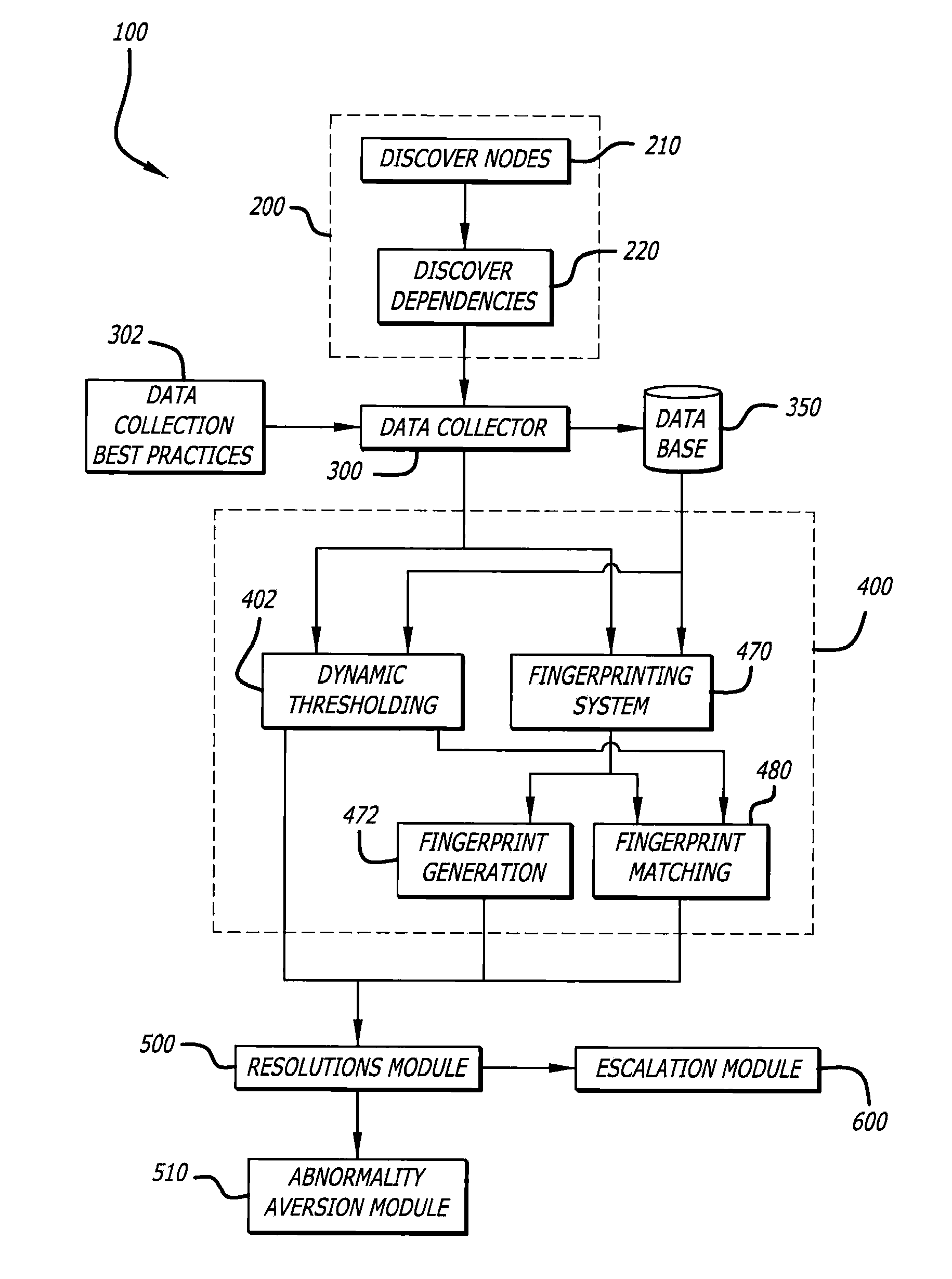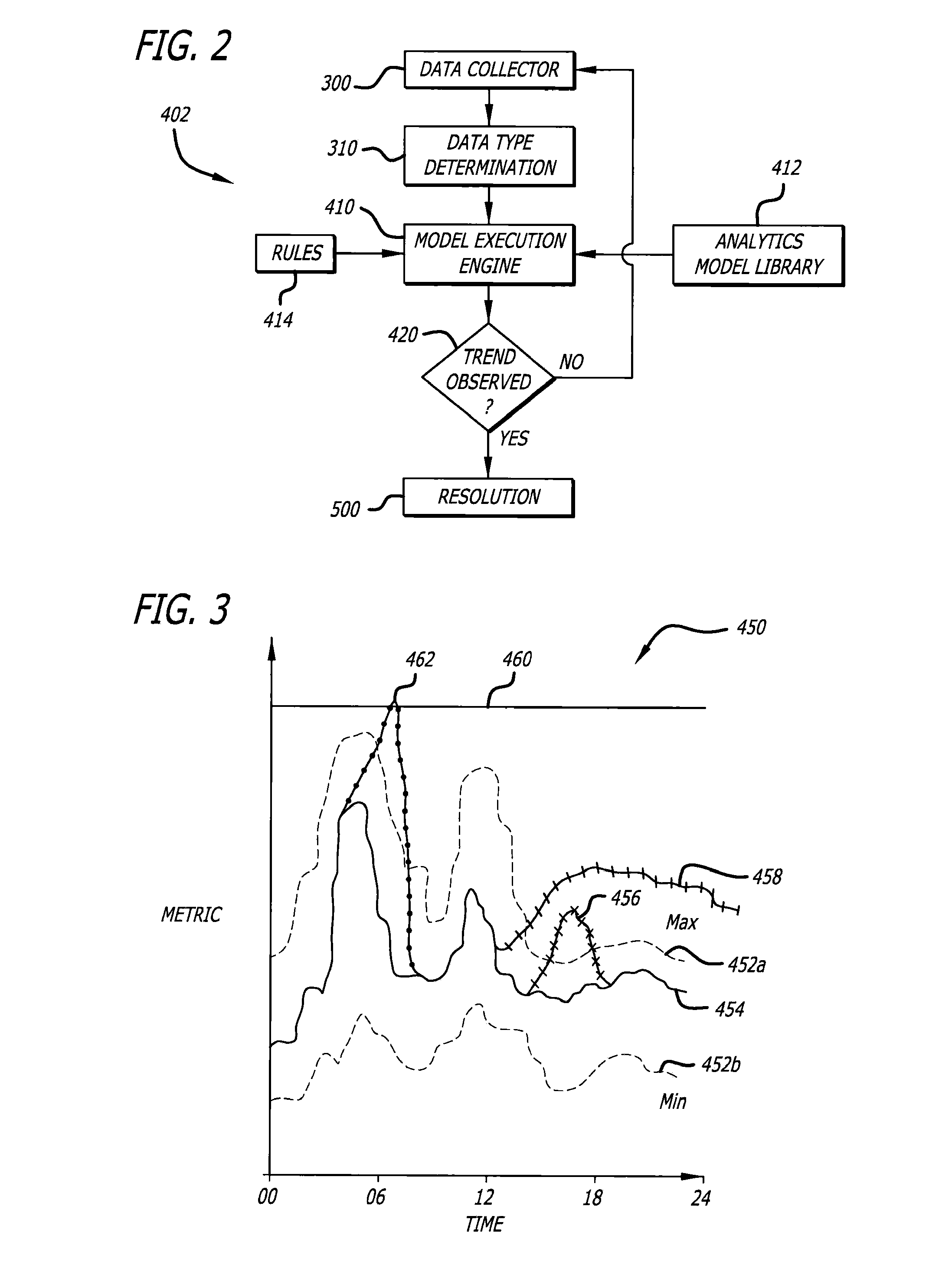Self-Learning Integrity Management System and Related Methods
a management system and integrity technology, applied in the field of systems, can solve the problems of human operators only being the tools to date suffer from an inherent inability to predict future events with accuracy, and the human operator is not able to instruct the computer how to model each variabl
- Summary
- Abstract
- Description
- Claims
- Application Information
AI Technical Summary
Benefits of technology
Problems solved by technology
Method used
Image
Examples
Embodiment Construction
[0016]As used in the present disclosure, the term “abnormality” shall be defined as behaviors of a components, nodes, or variables of a complex system that are unexpected as compared to a range of normal values. An “abnormality” may be indicative of a problem, aberrant behavior, inefficiency, improved behavior, or other behavior of interest.
[0017]As used in the present disclosure, a “node” shall be defined as a functional unit of a complex system.
[0018]As used in the present disclosure, an “event” shall be defined as an abnormal condition of a metric.
[0019]As used in the present disclosure, the term “exceed” used in the context of thresholds shall be defined as exceeding a maximum threshold value or dropping below a minimum threshold value.
[0020]As used in the present disclosure, a “metric” shall be defined as an atomic being measured in a complex system or in a transaction of the complex system, wherein an atomic is a fundamental entity within a system that can be measured.
[0021]As...
PUM
 Login to View More
Login to View More Abstract
Description
Claims
Application Information
 Login to View More
Login to View More - R&D
- Intellectual Property
- Life Sciences
- Materials
- Tech Scout
- Unparalleled Data Quality
- Higher Quality Content
- 60% Fewer Hallucinations
Browse by: Latest US Patents, China's latest patents, Technical Efficacy Thesaurus, Application Domain, Technology Topic, Popular Technical Reports.
© 2025 PatSnap. All rights reserved.Legal|Privacy policy|Modern Slavery Act Transparency Statement|Sitemap|About US| Contact US: help@patsnap.com



